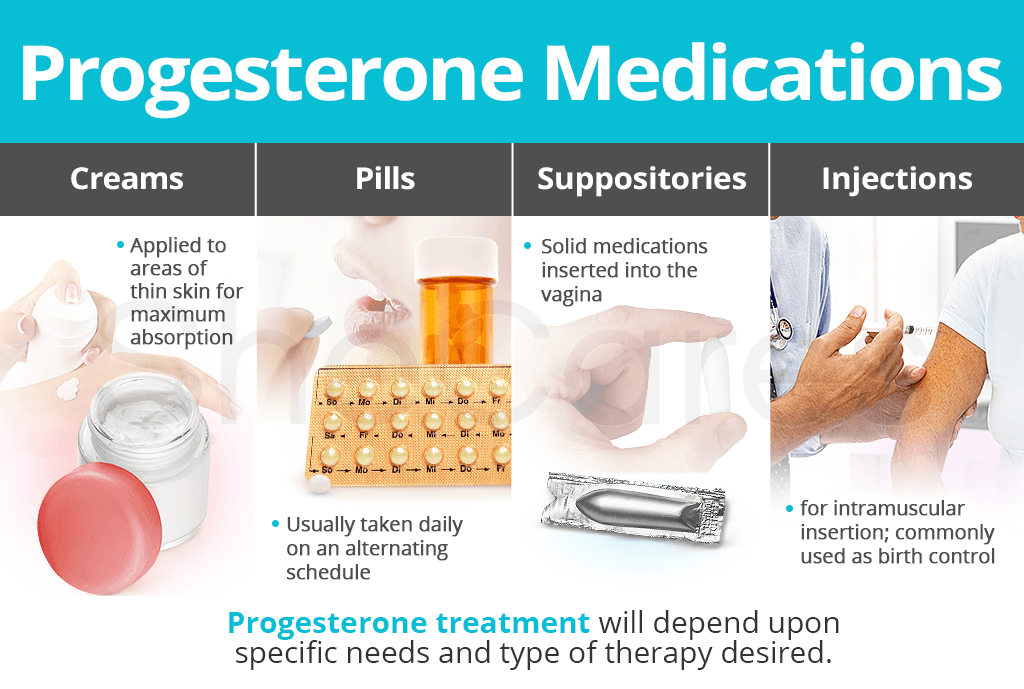Once a hormonal imbalance is verified with a progesterone test, women can choose a course of action. Aside from lifestyle changes and natural progesterone supplements, there are an array of progesterone medications that may be taken.
Continue reading to learn more about when and how to take progesterone as well as varying progesterone prescription options.
When Do I Take Progesterone?
A doctor will prescribe the exact dose of progesterone to be used and advise a treatment schedule based on each woman's needs and the specific type of treatment required.
For example, progesterone medication in the form of pills is often taken on a rotating schedule that alternates 10 to 12 days on and 16 to 18 days off.1 This would be different in the case of creams, suppositories, and injections.
In order to remember when to take progesterone, women are advised to do so at the same time each day, such as in the evenings. It is also important to follow instructions as directed.
How Do I Take Progesterone?
A woman may use progesterone by applying cream or gel, taking a pill, inserting a suppository, or administering an injection. Also, the hormone may be issued alone or in combination with estrogen.
Progesterone Creams. Being one of the most common forms of treatment, progesterone creams are for short or long-term use and to be applied to areas of thin skin for maximum absorption.
Progesterone Pills. Progesterone tablets are ingested orally on a daily basis, generally in the evenings. As aforementioned, they are normally taken on an alternating schedule.
Progesterone Suppositories. Progesterone suppositories are solid progesterone medications - tablets, capsules, inserts, etc. - that are inserted into the vagina up to three times daily.
Progesterone Injections. Progesterone shots are inserted into a muscle, usually the buttocks, once a day or once every few months. They are commonly used as contraceptives or to increase fertility.
Each method of administration brings with it its own list of benefits and side effects. It is important to understand each treatment in its entirety before implementation.
However, with the use of prescription progesterone treatment comes a heightened risk of adverse side effects, which might further aggravate a woman's hormonal disorder.
To avoid these side effects and explore less risky options, investigate some of the most effective progesterone supplements.
Sources
- Cleveland Clinic. (2017). Hormone Therapy. Retrieved October 28, 2019, from https://my.clevelandclinic.org/health/treatments/15245-hormone-therapy
- National Women's Health Resource Center. (n.d.). Progesterone. Retrieved October 28, 2019, from http://www.healthywomen.org/condition/progesterone
Footnotes:
- U.S. Department of Health and Human Services. (2017). Progesterone. Retrieved October 28, 2019, from https://medlineplus.gov/druginfo/meds/a604017.html
